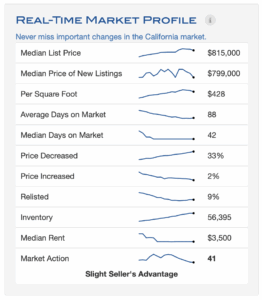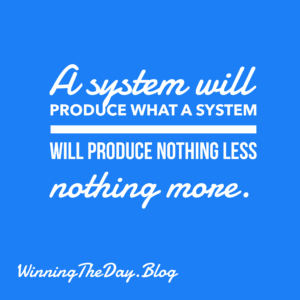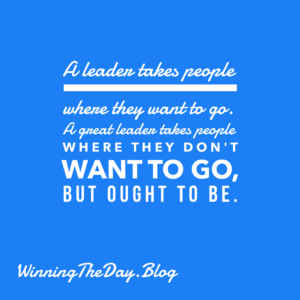As leaders in the real estate industry, our most critical function is to see the turn in the road before our teams do. For the last several years, the path has been straight and the wind at our backs. That has changed. The market has shifted, and the strategies that created top producers yesterday are quickly becoming irrelevant.
That’s why, when an essential industry voice like RISMedia convenes the industry’s sharpest minds for its annual Power Broker Forum, I consider the insights shared to be mandatory intelligence for every brokerage leader. The recent panel in Washington, D.C., featuring the presidents and CEOs of powerhouse firms like Samson Properties, Keller Williams Capital Properties, The Keyes Company, and C21 New Millennium, was no exception.
The message from these leaders was unequivocal: The era of passive agent management is over. If your agents are going to win in this new landscape, it will be because you, as a leader, equipped them with a new playbook. Here are the strategic imperatives you and your leadership teams must be focused on right now.
Mandate 1: Evolve from Data Provider to Strategic Counselor
For the first time in a decade, significant markets are seeing inventory levels climb—Kymber Lovett-Menkiti reported over five months of supply in D.C., while Christina Pappas cited a staggering two-year surplus of condos in Miami. Your agents are facing seller conversations they’ve never had before.
Your Leadership Imperative: Your role must evolve beyond simply providing access to data dashboards. You must actively train your managers and agents to interpret this data and frame a compelling strategic narrative for their clients. Are you running workshops on how to conduct a data-driven listing presentation for a seller whose expectations are anchored in 2022? Are you teaching them to shift the conversation from “your home” to “your biggest asset,” as Donny Samson advocated?
If your agents can’t translate market stats into a clear, persuasive strategy, they will lose listings.
Mandate 2: Build Foundational Skills, Because “Back to Basics” Isn’t Enough
Christina Pappas made the most pointed observation of the day: “The average (agent) has been in this business for less than 10 years and has no idea how to sell or market.” The challenge isn’t “back to basics”; for a significant portion of your roster, it’s about building the foundation in the first place.
Your Leadership Imperative: Audit your training calendar immediately. Is it built for today’s market reality? The panelists were unanimous on the need to get agents back into the office for purposeful, structured training. As a leader, your job is to create an environment where collaboration and skill-building are not just encouraged, but expected.
This is the time to double down on in-person listing workshops, mastermind groups, and role-playing difficult client conversations, building the muscle memory required for proactive, high-touch service.
Mandate 3: Force a Redefinition of Your Agents’ Value Proposition
Perhaps the most urgent mandate came from Jason Carrier, who challenged the industry to “stop talking about how many years of experience we have.” His point was sharp and accurate: tenure is not a measure of talent.
In an era of intense commission scrutiny, a vague value proposition is a liability.
Your Leadership Imperative: You must force your agents to redefine their value in quantifiable terms. Teach them to build a case based on their performance metrics—average days on market, list-to-sale ratio, and a proven marketing plan. Carrier asks his agents to prove they are “10% better” than the competition with tangible results. Are you making this the standard in your brokerage? Are your top producers demonstrating how they quantify their value in your sales meetings? As Carrier noted, leadership must “show what ‘right’ looks like.”
Mandate 4: Be the Executive Producer of the Client Experience
In a market where sellers have more choices, the ultimate differentiator is the client experience. The panel referenced the show “The Bear” to illustrate how one establishment can elevate a simple commodity to a luxury experience.
The value isn’t in the product; it’s in the delivery.
Your Leadership Imperative: Brokerages must be the architects of a superior client experience. This means providing the systems, partnerships, and tools that empower your agents to become indispensable advisors. Are you equipping them with a seller’s checklist, as The Keyes Company does? Are you providing them with resources to help sellers stage and prepare their homes? Your job is to create a framework that allows your agents to confidently “diagnose” a client’s needs and deliver a bespoke, five-star solution that justifies their fee, every single time.
The leaders on the RISMedia stage weren’t just sharing tips; they were outlining a doctrine for modern brokerage leadership. The organizations that gain market share in the coming years will be those whose leaders embrace their role as chief strategists, trainers, and cultivators of talent.
The critical question isn’t just whether your agents are ready for this market. It’s whether you are doing what’s necessary to prepare them.
Price is only an issue in the absence of value.
If you’re grappling with how to implement these high-impact strategies within your own leadership team, let’s connect. It’s time to build the future of your brokerage, not just react to it.






